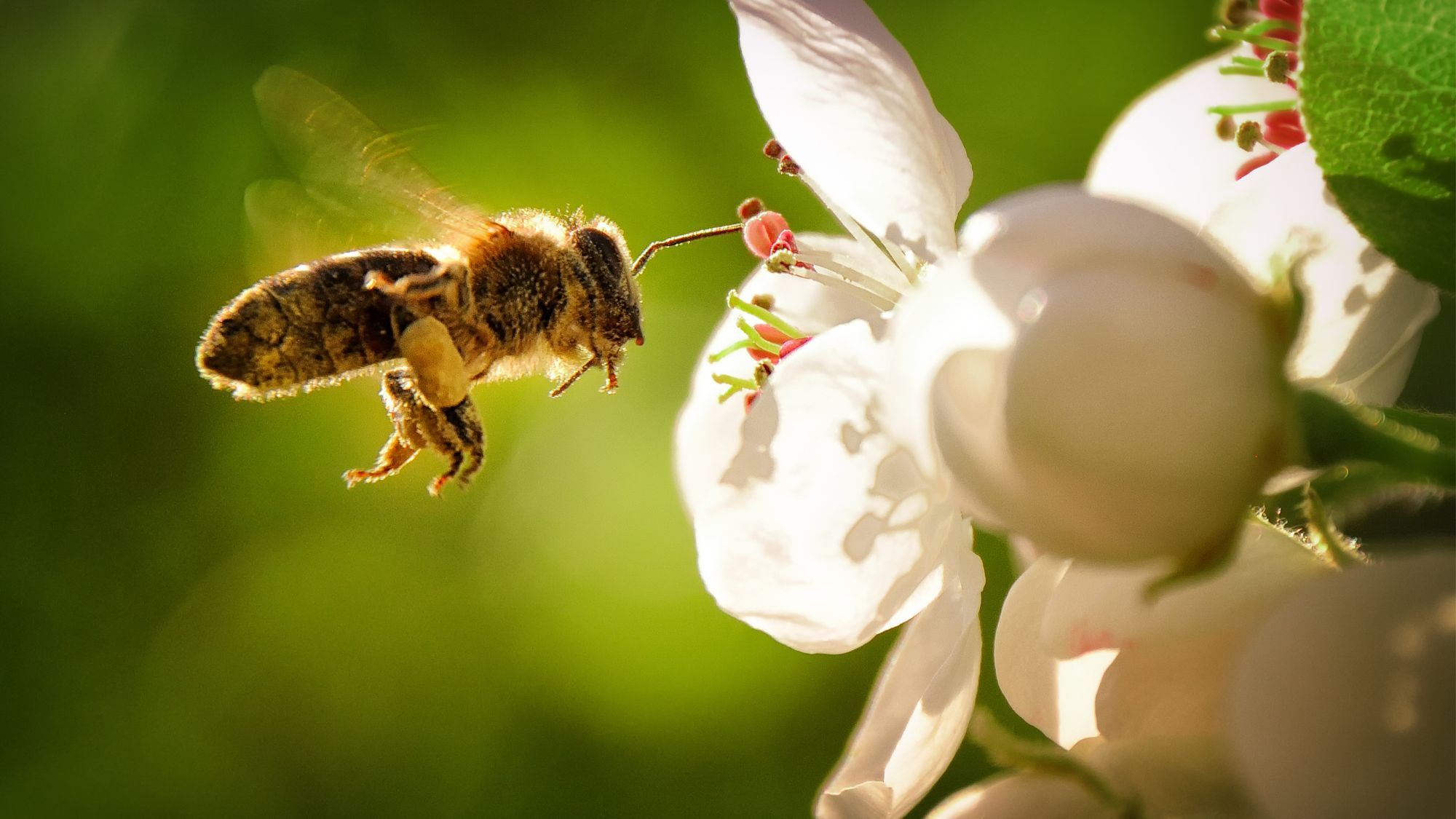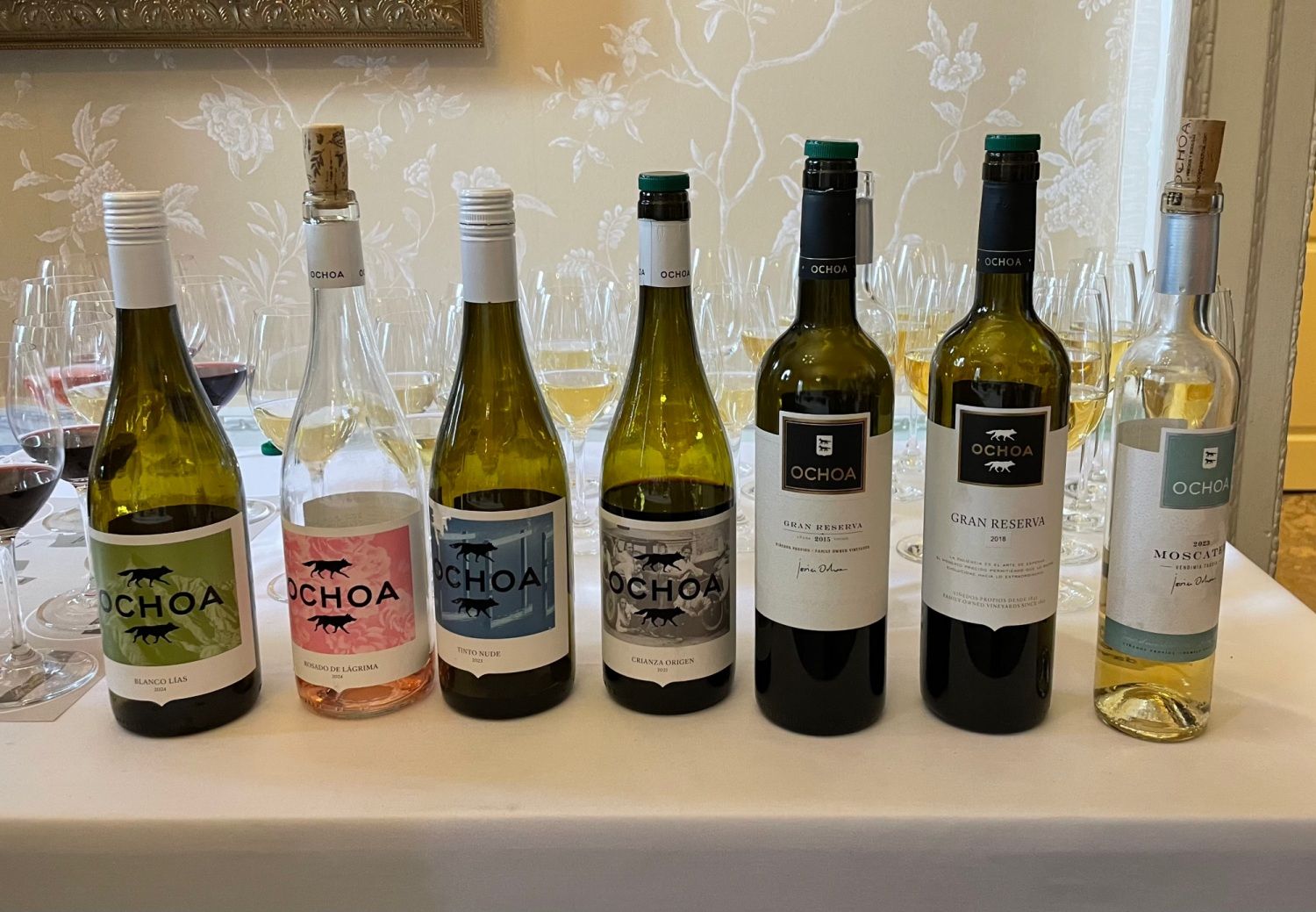We continue our series looking at the steps being taken across Bordeaux to take its wines to the next level with this focus on sustainability and protecting the environment in the Medoc.
Whenever any of us use the term sustainability, it always feels like it needs to come with a footnote. What does it actually mean? “If we’re still able to do what we’re doing in 100 years’ time, then we’re probably sustainable” is probably the most poignant explanation I’ve heard in recent times, but it helps little with the detail.
Environmental, societal, financial, and resource concerns all play their part. The French government’s Haute Valeur Environnementale programme, launched in 2001, looked to address each in turn. It does, however, have to be taken into context that this was designed for the whole of French agriculture and across the many regions of France. Each individual industry in each region is at liberty to add their own specifications on top of the base case rules. It’s these extra elements where the stakeholders in Bordeaux have thrown their energies and are achieving impressive results.
I managed to sit down with six producers from Médoc to discuss their own motivations and the strategies they’re employing at their respective estates to add the local touch.
Château Lagrange, Saint-Julien
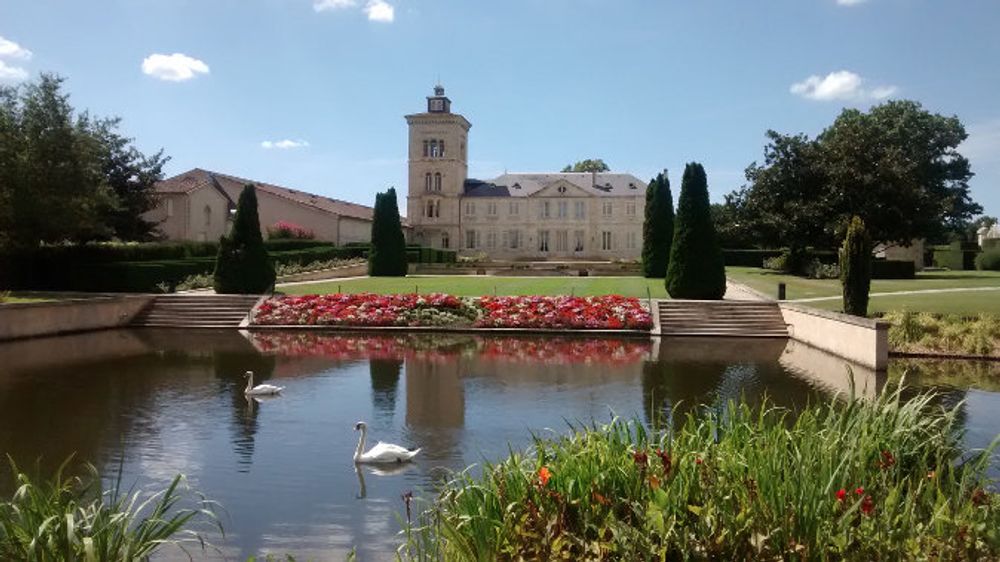
Chateau Lagrange has planted close to 40 hectares of its property with fields and woodlands to help with the biodiversity of its environment
In 2015, Lagrange signed up for the Environmental Management System (SME), organised by the CIVB, to help them towards attaining both the ISO 14001 and the HVE3. They recorded all agro-ecological infrastructure on the property and were encouraged to develop the biodiversity onsite.
Their current situation sees 39 of their 157 hectares planted as fields, woodlands, lakes, or gardens, with all vineyards certified under Terra Vitis since 2005. In 2020 they released a five-year plan to introduce another 1,000 trees, more hedgerows, bird boxes, and ponds.
“It’s important for us to only work with local species,” says Lagrange’s Justine Memmi. “We then favour maximum diversity of local species, as we don’t yet know the interactions between each plant and the vines. We look to establish the plants as quickly as possible, and then we can strategise further plantings from there.”
Equally as important for the management team is that all the staff get full biodiversity training. This is as true for the workers in the vineyards, to the global sales staff, and all the way to the kitchen porters at their new chef’s table that welcomes guests to the Château for local, seasonal, and sustainably produced dining experiences.
“It is necessary to explain regularly to the team what we are doing and why we are doing it,” says Memmi. “The teams are the first to witness climate change and they understand that it is necessary to make changes in our practices. Some changes are very different to what they’re used to, for example we now have more than half of the vineyard completely grassed and acceptance by workers, who are not used to allowing weeds or grass between the vines, is not always easy. We have already trained the teams on these practices and will continue to do so in the future to support the change as much as possible.”
Château Fourcas Hosten, Listrac-Médoc
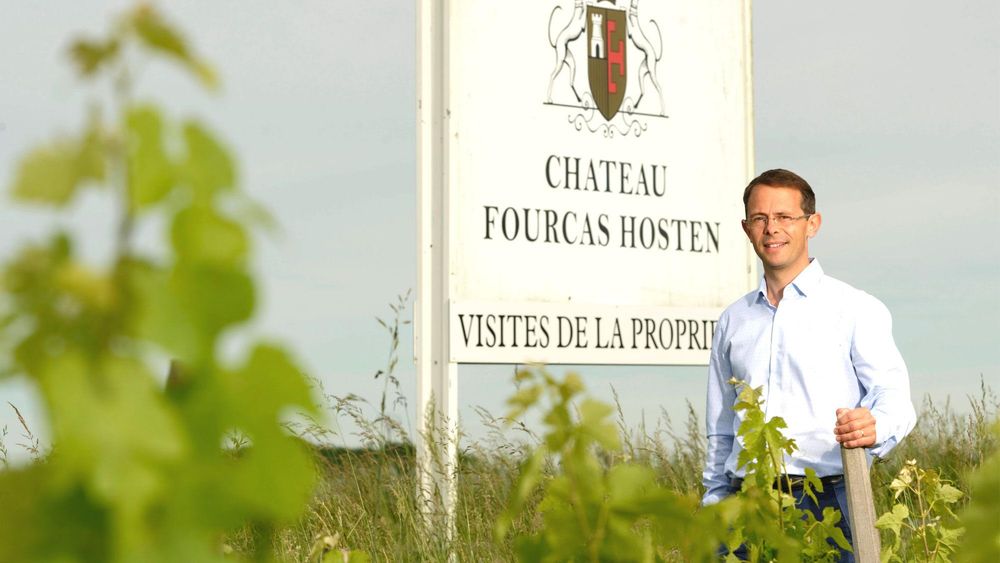
Eloi Jacob at Château Fourcas Hosten says the CIVB has done a lot in helping train his staff around environmental practices
Located just a stone’s throw from the village of Listrac, the famed “roof of the Médoc” at a dizzying 43 metres above sea level, the vines of Château Fourcas Hosten benefit from the biodiversity bestowed by the local woods and pine forests. It was partly this proximity to the nature of the Landes that convinced the team to pursue environmentally protective and regenerative practices, especially with relation to their soils. By 2017 they had become HVE Level 3 certified, and now move for organic certification for their whole product range.
“Attaining HVE certification is not so easy,” says director, Eloi Jacob. “There is a lot of administration (traceability, calculation, environmental indicators) but also a lot of processes to put in place and training the whole staff.”
Jacob goes on to praise the CIVB for the training it offers its members through the Environmental Management System, launched in 2011. He also credits his move to HVE Level 3 as the kick start to the current organic conversion at the property. “The HVE focused us on our inputs and their management. Once you have this process, you just have to choose organic inputs and you’re on your way.”
Has he seen a lot of difference since changing his practices? “We know it’s a process that is both fast and slow. Fast because we quickly see natural grasses growing and more insects buzzing around. On the other-hand we have had an initial loss of yield as the vines adapt. I have to be honest and admit it has been difficult to see any immediate impact on the quality of the grapes and wine. But we know from others that the rewards do come and so we’re confident this is the right path.”
Château Doyac, Haut-Médoc, Cru Bourgeois Supérieur

Clémence de Pourtalès oenologist at Château Doyac and daughter of owners Astrid and Max de Pourtalès
Max de Pourtalès returned to his Bordelais roots in 1998 when he acquired Château Doyac. During the 2016 conversion to organics, his conversations with his consultant oenologist, Rodolphe Montagnon, convinced him to convert his full 27 hectares to biodynamics. The 2018 vintage was certified organic, followed the next year by their first Demeter certified vintage.
Biodynamics can be a tough sell to people, with many vocal critics of the practices, so what convinced the decision makers at Doyac that this was the path to follow?
“After conversations with Rodolphe, we followed up with a two-day training course with Vincent Masson and then became acquainted with Nicolas Jamin, who is still our biodynamic consultant. The passion of all those we met was very infectious,” says Astrid de Pourtalès. “Converting to organics was touch as it meant more tractors and tools and an extra financial burden. To move to biodynamics from there we only needed a dynamiser, a sprayer, and a giant teapot. It was a logical and easy next step.”
How did neighbours, friends, and clients take the news of the intended conversion? “Our winemaking neighbours are intrigued, but also wary of the additional work and of lower yields especially with the issues already relating to climate change,” adds De Pourtalès. “As far as friends and clients are concerned, however, they all think this conversion is the best thing we could do. We also welcome many tourists to Doyac for a visit and a tasting these days, with the tourists keen to see the process of biodynamics and the difference in the tasting. It’s really helped with developing direct sales.”
Have there been any “have we done the right thing?” moments along the way? “We have always been convinced that we made the right choice,” claims De Poutalès. “It can be worrying at times, for example when we were fighting against mildew like in 2018, but we feel now that we work in nature for nature in a life of observation. We make our own composts, herbal teas, and sprays and have loved the increased biodiversity around the cellars.”
Les Domaines Fabre, Haut-Médoc and Margaux, Crus Bourgeois

Jean-Hubert Fabre is leading the environmental steps being taken by Les Domaines Fabre
Les Domaines Fabre are owners of Crus Bourgeois estates, Château Lamothe Cissac in Haut-Médoc and Château Bellevue de Tayac in Margaux. Its strong environmental commitment is led by “new generation” winemaker, Jean-Hubert Fabre, the son of the owners. Returning animals to the land is a key angle of what they’re trying to achieve. This recently included the arrival of a flock of 30 Landes sheep in the vineyards aiding agropastoralism on the estate.
Its Château Bellevue de Tayac estate in Margaux is also one of the increasing numbers of Bordeaux producers to sign up to the Bee Friendly certification. Started in 2012 to address the decline in bee populations and the effect on agriculture, the association spreads best practices and how to integrate bees, and pollinating insects in general, into agricultural practices. The Bordeaux region, thanks to producers such as Monsieur Fabre, is now the leading wine region in France for Bee Friendly certification.
“We decided to work with Bee Friendly out of curiosity (and concern) for wild and domestic bees,” says Mélanie Fabre. “There were plenty of different things we could change to impact positively on local numbers and now some of our plots have a really high level of biodiversity that we have never seen before. We’re also seeing very good pollination in the last two years.”
Hubert was relieved to find out she didn’t need to don the beekeeping suit herself to attain the accreditation. “We don’t own the hives but make our plots available to beekeepers who are looking for interesting places for their bees. It is therefore an exchange of resources and good practices to help nature. It’s a great community now and it’s been very nice meeting the beekeepers of our territory.”
Château Meyney, Saint-Estèphe
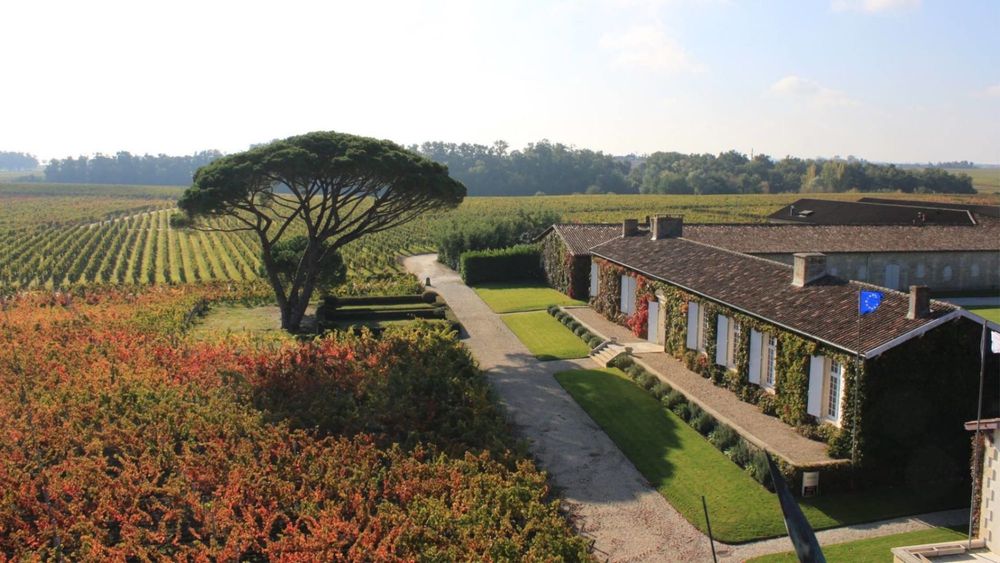
Château Meyney aims to harness the sun’s energy to run the winery and its vineyards ‘off grid’
The team at Château Meyney are no strangers to sustainability initiatives. In 1995 they ceased using insecticides as soon as sexual confusion techniques were commercially available. By 2007, the year of the Bordeaux’s first wine industry carbon footprint analysis, they had replaced the use of herbicides by grassing vineyards. The following years have seen increased hedgerow planting, the rewilding of fallow plots, the introduction of beehives, and the establishment in 2019 of their very own wildlife observatory platform.
It’s their commitment to reducing fuel consumption, however, that really catches the eye. Fuel oil, gas, and non-renewably generated electricity was responsible for 18% of the carbon footprint of the wine industry in Bordeaux in 2019. Château Meyney, following a recent energy study, began to install photovoltaic panels last year, and followed that by buying electric “straddle” tractors. The feasibility study is ongoing, but the plan is to eventually be able to run the vineyards and winery ‘off grid’ via solely renewable energy.
“Our intention follows the realisation of a complete energy diagnosis of our site,” reveals Amanda Joseph, sustainability manager at Meyney. “We believe 529 panels on a surface of 1464m² means we can achieve 71% of our energy needs.”
It’s not without its complications of course. “The installation is not straight forward. These are large, heavy panels that need to be fitted safely and in accordance with the natural environment and historic buildings on site and nearby. The extra building work to make them safe and secure are huge considerations, but we continue to move forward. We’re confident in the plan and see huge upsides for the future of the Château.”
Château Livran, Médoc
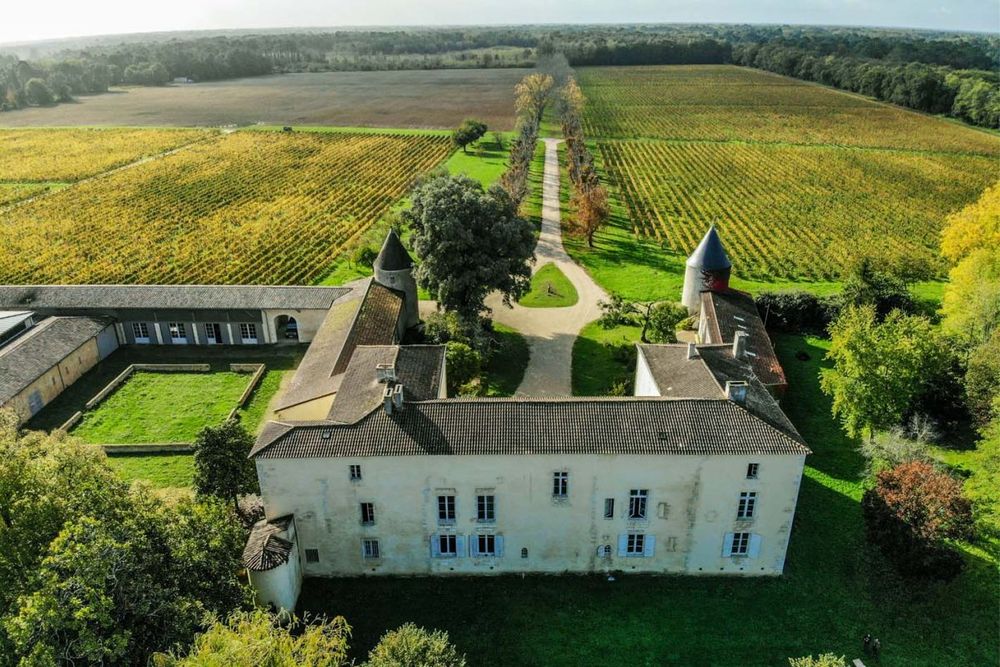
Château Livran is a 40 hectare biodynamic producer in St Estèphe
Situated in Médoc AOC, just to the north-west of the vineyards of St Estèphe, is Château Livran. Since 2016 they have added their 40 hectares of vines to the estimated 2,400 hectares of certified biodynamic vineyards across Bordeaux. They also house an innovative waste-water management system called Vingalex, in answer to the increasing pressure to guard our use of this most valuable of resources.
Developed by the Médoc-based company Souslikoff, waste water from the winery and vineyard is sprinkled over crushed vine shoots collected from the vineyards. The ligneous structure acts as a filter for the water, and as the mixture is continuously turned and sprayed, the composting begins at pace and removes the last remaining pathogens. This compost using vine clippings and waste water is available to reuse in the vineyards just a few months later, continuing the circular farm economy.
“We think that we can treat around 300m3 each year with this process,” reveals owner Edwige Michon. “We have no need to store or send away any waste water for additional treatment as it either gets encapsulated into the final compost or is evaporated off by the heat of the biological reaction. Our analysis has proven that no chemical residues remain at the end of the process, it just leaves us with healthy compost to feed our vines each year.”
Château Fontesteau, Haut-Médoc, Cru Bourgeois Supérieur
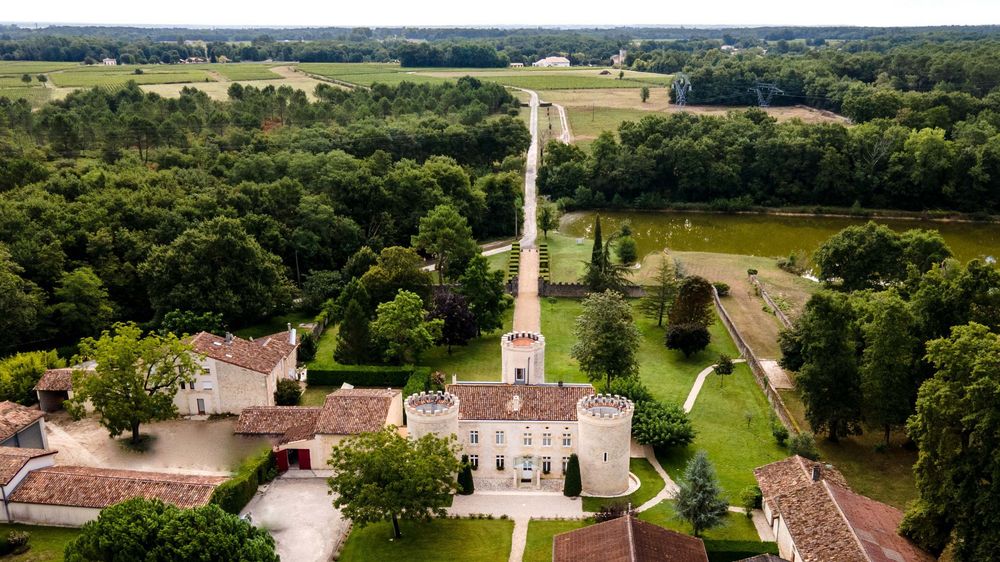
Château Fontesteau is now in the final year of conversion to organic farming
The picturesque Château Fontesteau has 20 hectares of vines set amongst an estate of nearly 100 hectares. Following the arrival of technical director, Julien Jonquet, the property gained HVE Level 3 certification and are currently in the final year of organic conversion. During the process of gaining these important certifications, they joined the CIVB’s Environmental Management System in 2017. “The SME process was a great way to join the whole team together,” says Marion Cousin, chief executive at Fontesteau. “Everyone was involved in all the little changes we needed to convert to organics.”
The focus on biodiversity on the property, which includes an impressive lake in front of the 13th century main building, has seen a proliferation of native wildlife thriving at the property. This has included bats, birds (both land and aquatic), snakes, frogs, deer, and of course a whole host of weird and wonderful looking insects. “We have been incredibly excited by one arrival in particular,” adds Cousin. “For two years in a row now we’ve had otters returning to our lake and we’ve been able to see them playing and hunting at night.”
One of the proudest projects on the estate is the Agro-Pastoral initiative that began in 2018 with the arrival of Jonquet’s own native Landais sheep to graze the vineyards during the winter and the wider estate during the vines’ growing season. The obvious benefits, including less tractor use and natural fertiliser, have been joined by some interesting extra benefits. Deer don’t come into the vineyards as much due to the sheep wool that is occasionally snagged on fencing and vines. Not only does this reduce the need to control the deer as a “pest”, but also it has given the confidence to other wildlife to return to the vines, including herons that are making light work of the snail population in the vineyard.
Further environmental initiatives
Across just these six producers from Médoc appellations we’ve seen organic and biodynamic practices, an impetus for greater biodiversity, and further initiatives to tackle more of the pillars of sustainability such as energy and water usage. Vignerons in Bordeaux, ably assisted by the CIVB and vintners’ associations like the Conseil des Vins du Médoc, are clearly taking their responsibilities to the future of the region very seriously, as they must. Climate change is here, and the global wine industry is understanding that it has to change rapidly because of it. Bordeaux is clearly determined to stay at the forefront of that change.
2022 figures highlight certified environmental approaches (HVE3, Bio, Biodynamie, Terra Vitis, AREA) in Médoc with the following vineyards either certified or in conversion:
Médoc 91% certified or commited, Haut Médoc 97%, Listrac 98%, Moulis 91%, Margaux 91%, Pauillac 99% and St Estephe 86%.
- 91 % Médoc certified
- 97% Haut-Médoc
- 98% Listrac
- 91 % in Margaux
- 91 % in Moulis
- 99 % in Pauillac
- 86% in Saint-Estèphe
- Mike Turner is a freelance writer, presenter, and educator and regular contributor for The Buyer. He also runs a wine events business, Feel Good Grapes, that explores and discusses the idea of sustainability in the wine trade.
